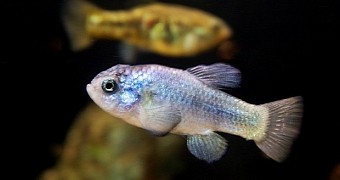The desert pupfish, a rare bony fish now living solely in California, US, and in Baja California and Sonora in Mexico, can go as much as 5 hours without oxygen, researchers collaborating with the American Physiological Society write in a new paper.
According to University of Nevada, Las Vegas scientists Frank van Breukelen and Stanley D. Hillyard, the species has evolved to go this much time without oxygen in order to survive the harsh environment it is now forced to live in.
It's a hard knock life for desert pupfish in North America
The desert pupfish population that Frank van Breukelen's and Stanley D. Hillyard's investigation focused on was the one inhabiting warm springs close to California's Death Valley, currently one of North America's driest and hottest areas.
The University of Nevada, Las Vegas researchers say that, about 10,000 years ago, the region looked very different in that it held a massive amount of water. In time, the water receded that the local aquatic wildlife was confined to a few warm springs.
The same thing happened to the desert pupfish, presently forced to live in springs whose temperatures can reach 35 degrees Celsius (95 degrees Fahrenheit). To survive in such environments, the species has evolved to stop breathing oxygen for up to 5 hours.
“Essentially, these fish spent most of their evolutionary history in cooler waters until recently when the fish were isolated to waters that are as high as 35 degrees Celsius (95 degrees Fahrenheit),” specialist Frank van Breukelen said in a statement.
So, how does not breathing oxygen help these aquatic dwellers?
In the report detailing their work, the University of Nevada, Las Vegas scientists explain that, when the fish' body processes oxygen in high temperatures, the result is the production of reactive oxygen species that can damage their cells.
Thus, it looks like desert pupfish populating California's Death Valley have evolved to go without oxygen for considerable periods of time in an attempt to keep themselves safe from, well, disintegrating from the inside simply by breathing.
To stay alive while not breathing oxygen, the fish must push their metabolism into overdrive. Data at hand indicates that, when the aquatic dwellers stop taking in oxygen, their metabolism starts working 15 times harder to keep them alive.

 14 DAY TRIAL //
14 DAY TRIAL //